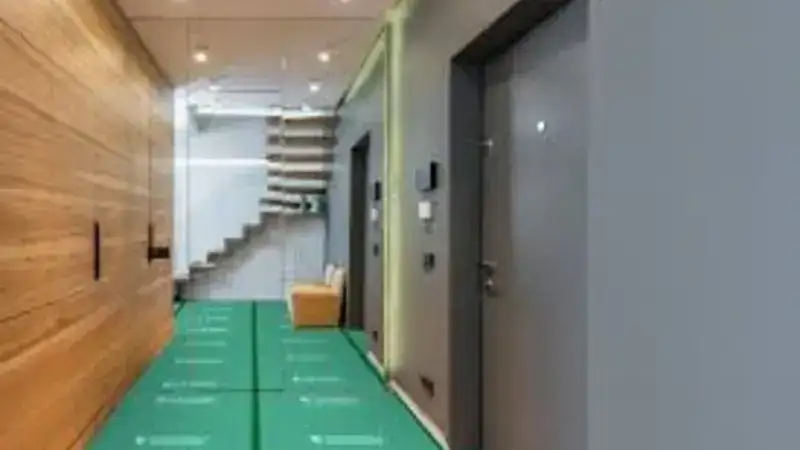
Benefits, Installation, and Removal
Temporary floor protection is a crucial aspect of any construction or renovation project. Building sites can be hazardous, with dust, debris, and liquids posing a significant threat to floors and surfaces. Without proper protection, these surfaces can become damaged, leading to costly repairs and potential safety hazards.
The risks associated with unprotected floors on building sites include:
- Damage from dust, debris, and liquids.
- Slip and fall hazards.
- Damage to finishes and surfaces.
- Increased maintenance and repair costs.
- Potential safety hazards for workers and visitors.
Benefits of Using Temporary Floor Protection
Temporary floor protection offers numerous benefits for building sites, including:
- Protection from dust, debris, and liquids.
- Prevention of slip and fall hazards.
- Preservation of finishes and surfaces.
- Reduced maintenance and repair costs.
- Enhanced safety for workers and visitors.
- Easy installation and removal.
- Cost-effective solution for floor protection.
By using temporary floor protection, builders and contractors can ensure that their building sites are safe, secure, and protected from damage. This not only saves time and money in the long run but also helps to prevent accidents and injuries.
Preparing Surfaces Before Using Temporary Floor Protection
Before installing temporary floor protection, it’s essential to prepare the surface properly. This step is crucial to ensure that the protection adheres correctly and provides maximum protection for the floor.
Here’s a step-by-step guide on how to prepare surfaces before using temporary floor protection:
- Clear the area: Remove any debris, dust, or obstructions from the floor. This will ensure that the protection adheres correctly and doesn’t get damaged during installation.
- Clean the floor: Thoroughly clean the floor with a suitable cleaning solution to remove any dirt, grime, or old adhesives.
- Dry the floor: Ensure that the floor is completely dry before installing the temporary floor protection. This will prevent any moisture from getting trapped under the protection and causing damage to the floor.
- Inspect the floor: Inspect the floor for any cracks, unevenness, or damage. If necessary, repair the floor before installing the temporary floor protection.
- Remove old adhesives: If there are any old adhesives or residues on the floor, remove them completely before installing the temporary floor protection.
Installing Temporary Floor Protection: Tips and Best Practices
Installing temporary floor protection requires attention to detail and a bit of planning. Here are some tips and best practices to help you install temporary floor protection like a pro:
- Measure the area: Measure the area where you want to install the temporary floor protection to ensure that you have enough material.
- Choose the right material: Choose a temporary floor protection material that is suitable for your floor type and the level of protection you need.
- Follow manufacturer instructions: Follow the manufacturer’s instructions for installing the temporary floor protection. This will ensure that you install it correctly and get the best results.
- Apply the protection slowly: Apply the temporary floor protection slowly and carefully to avoid air bubbles and wrinkles.
- Ensure a tight seal: Ensure that the temporary floor protection is sealed tightly around the edges to prevent moisture and debris from getting underneath.
- Inspect the protection: Inspect the temporary floor protection regularly to ensure that it is still providing adequate protection for the floor.
Removing and Disposing of Temporary Floor Protection
Removing and disposing of temporary floor protection is an important step in maintaining a safe and clean building site. Here are some tips to help you remove and dispose of temporary floor protection:
- Plan ahead: Before removing the temporary floor protection, ensure that the area is clear of any debris or obstructions.
- Follow manufacturer instructions: Follow the manufacturer’s instructions for removing the temporary floor protection.
- Use the right tools: Use the right tools, such as a scraper or a putty knife, to remove the temporary floor protection.
- Dispose of responsibly: Dispose of the temporary floor protection responsibly, by recycling or disposing of it in accordance with local regulations.
Choosing the Right Temporary Floor Protection Product for Your Needs
With so many temporary floor protection products on the market, it can be difficult to choose the right one for your needs. Here are some factors to consider when choosing a temporary floor protection product:
- Type of floor: Consider the type of floor you need to protect. Different types of floors require different types of protection.
- Level of protection: Consider the level of protection you need. Do you need protection from heavy foot traffic, or just from minor spills and splashes?
- Durability: Consider the durability of the product. Will it withstand the conditions on your building site?
- Ease of installation: Consider the ease of installation. Will it be easy to install and remove?
- Cost: Consider the cost of the product. Is it within your budget?
Conclusion
Temporary floor protection is an essential component of any building site. It provides a safe and clean environment for workers, and helps to prevent damage to floors and surfaces. By choosing the right temporary floor protection product for your needs, and following the tips outlined in this article, you can ensure that your building site is protected and safe. Remember to always follow manufacturer instructions, and to dispose of temporary floor protection responsibly. With the right temporary floor protection, you can focus on completing your project on time and within budget.






